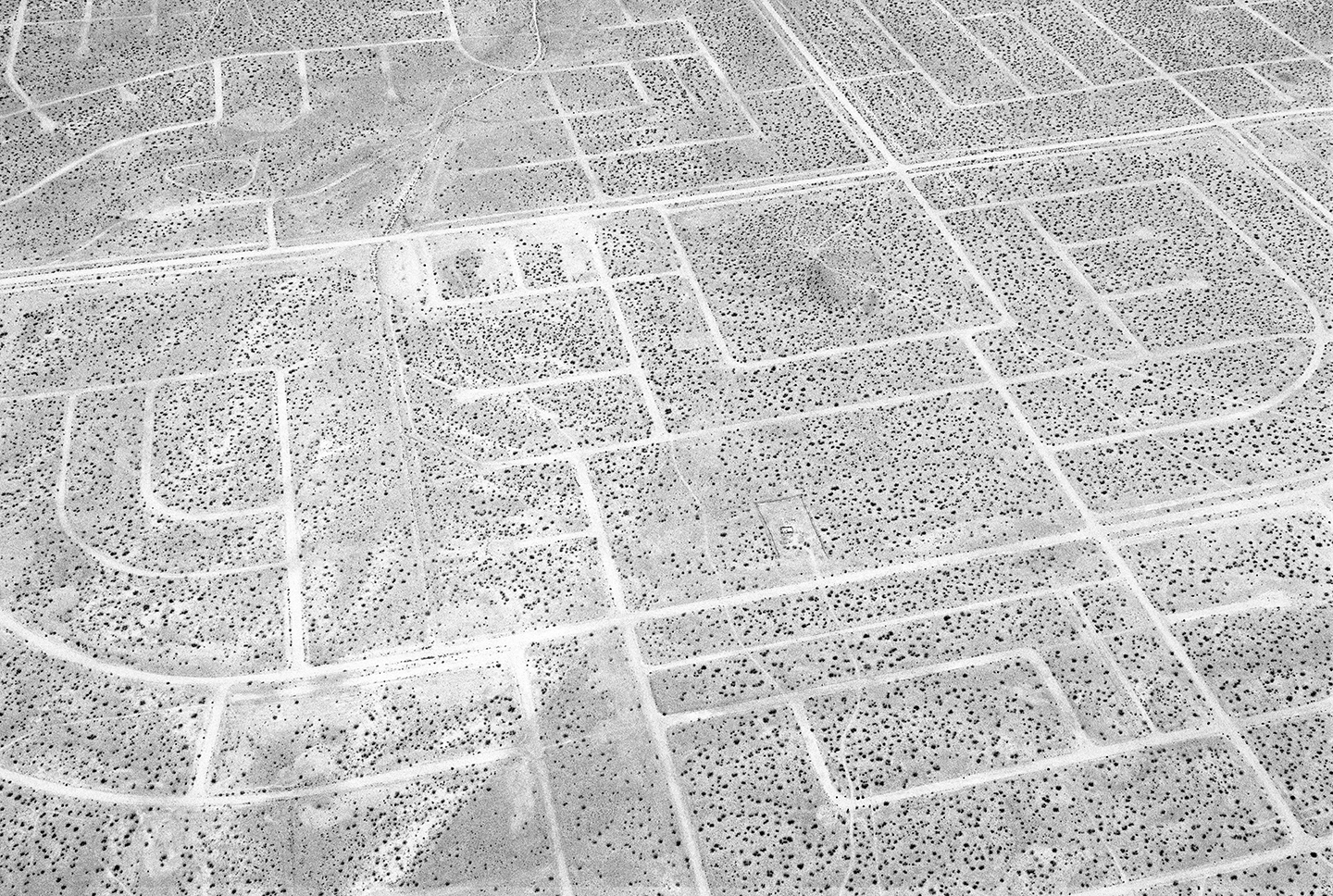Noritaka Minami's aerial photographs of the failed urban project of California City in the Mojave Desert are quietly devastating. Purposefully using high-ISO film that shows grain even at low enlargement, his images of a planned city — mostly a network of uninhabited roads — are pale planes of dots and lines. The images conjure up the Peruvian Nazca lines, military surveillance networks, the geometric abstraction of Dutch de stijl art and the empty West of Ed Ruscha's 1963 "Twentysix Gasoline Stations" series.
The grain of the film merges with desert shrubs that dot the land with a similar frequency to the clusters of silver formed by the film development process. In other words, it's easy to confuse the medium of visualization with the territory itself.
Minami, born in Japan and now living in the U.S., has investigated Utopian spaces and architecture in several photographic projects, including "1972," which featured the renowned, and now decrepit, modernist Nakagin Capsule Tower in Tokyo. While exploring these visions, Minami, who works as an assistant professor of photography at Loyola University Chicago, considers how a photographic methodology can be adapted in order to be reflective of the subject. In the case of the California City project, the grainy film is used to make the images difficult to place temporally; they look like photographs taken in the 1960s or '70s, when California City was being developed.


















With your current subscription plan you can comment on stories. However, before writing your first comment, please create a display name in the Profile section of your subscriber account page.